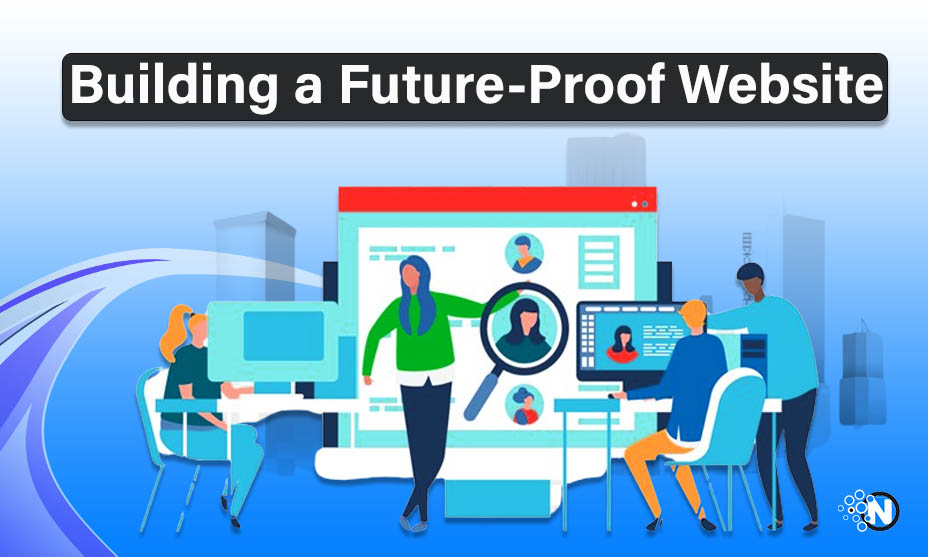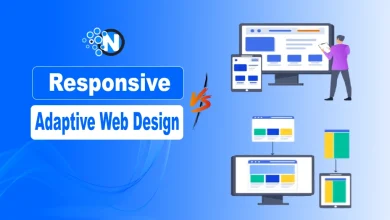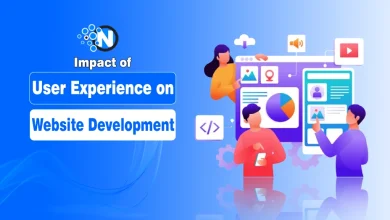Building a Future-Proof Website: Integrating Scalable Architecture and Modern Design Trends

In Sandvine’s 2023 Global Internet Phenomena Report, the world’s internet traffic volume increased by 23%. Unfortunately, most websites aren’t built to handle the weight of these growing demands. So, how can we create beautiful, resilient, and adaptable web pages?
The answer is in future-proofing. It is about designing websites with a foundation to handle growth, integrate new and scalable technologies, and remain secure.
This blog post contains the best practices to build future-proof websites. We will also discuss modern design trends that perform exceptionally and remain poised to dominate the future digital world.
Future-Proof in Web Development
Future-proofing in web development is the process of building websites that can adapt to the changing times. It’s about creating structures that can handle growth, integrate new technologies, and remain secure without requiring replacement or an extensive overhaul.
Business Impact
Here’s how future-proofing impacts your business:
With a future-proof website, you do not have to constantly rebuild from scratch as your business grows or technology advances. That saves time and money and keeps you ahead of the curve. So, let’s say you are starting an e-commerce store with a site that handles only a few dozen orders daily.
A future-proof website built considering scalability should handle a surge in traffic. This would prevent frustrating crashes and lost revenue during a holiday sale. Future-proofing isn’t just about growth. It also covers building websites that can be maintained and updated efficiently. This results in lower long-term costs and a site that remains engaging for your users.

Key Elements of a Scalable Architecture
We’ve established that future-proofing your website hinges on a solid foundation – a scalable architecture. But what exactly makes an architecture scalable? Let’s see the key elements that will ensure your internet site can grow and adapt with ease:
- Microservices and Modular Design
A future-proof website is built from independent building blocks, each handling a specific function (e.g., user login, product catalog). This approach lets you update or replace separate components without affecting other web pages.
- Cloud Integration
Cloud platforms offer a scalable and cost-effective solution for website infrastructure. They can dynamically allocate resources based on traffic demands. This ensures that your website can handle sudden user spikes without performance issues.
- API-Driven Development
Employing APIs ensures seamless communication and data exchange between various components, even if they’re built with other technologies. So, if your website integrates a social media login feature, an API allows secure communication between your site and the social media platform. This provides a smooth user experience without reinventing the wheel.
- Load Balancing and Caching
This distributes incoming traffic across multiple servers so no particular server is overloaded. Caching stores frequently accessed data to reduce the load on your database. It also ensures a smooth user experience even during peak traffic times.
Modern Design Trends to Integrate
Let’s see modern UX design trends to create a functional, user-friendly website:
- Responsive and Adaptive Design
Gone are the days of desktop-only websites. Now, users access websites from multiple devices. The adaptive design ensures your website’s layout and functionality automatically adjust to fit any device’s screen size.
- Micro Frontends
This breaks down the frontends into smaller, independent components, allowing for greater flexibility and maintainability. Let’s say you have a news website with micro frontends. The individual frontends display breaking news, sports headlines, and weather updates. So, each component can be developed and updated independently, keeping the site updated and efficient.
- Dynamic Content Personalization
This trend involves tailoring website content to suit individual user preferences. For instance, a streaming service like Netflix recommends similar movies based on a user’s watch history.
- Minimalism and Accessibility
Minimalist design focuses on clean layouts, clear fonts, and visuals to improve readability and user experience, especially on smaller screens. With features like keyboard navigation and screen reader compatibility, your internet site will be accessible to everyone.
Steps to Implement a Future-Proof Website
Here’s how to future-proof your website:
- Assessment and Planning
Thoroughly analyze your website’s architecture and UX design. Identify areas where it might struggle with scalability, performance, or user experience.
- Define Requirements
Don’t build a spaceship when you only need a bicycle. Clearly define your website’s future needs. What level of scalability do you anticipate? What performance benchmarks are crucial for your business? How do you want your web pages to look and feel for your users? Having clear goals will guide your technology choices and design decisions.
- Adopt Modern Technologies
The tech world constantly evolves, offering new tools and frameworks to build better websites. Research and choose technologies that align with your defined requirements. It may involve cloud platforms for scalable infrastructure or modern JavaScript frameworks for dynamic user interfaces. It may also involve headless CMS solutions for content management flexibility.
- Iterative Development
The future is unpredictable, so embrace agility by adopting an iterative development approach. It allows you to continuously build, test, measure, and refine your web pages without an expensive overhaul.
Conclusion
Future-proof your website on a scalable architecture to adapt and grow with your business. Also, consider modern design trends like responsive layouts and personalization to keep users engaged across devices and preferences. Plan your future-proof website, analyze your current setup, define goals, choose the right technologies, and iterate. With these steps, you’ll create a thriving digital storefront to outpace the ever-changing web.




